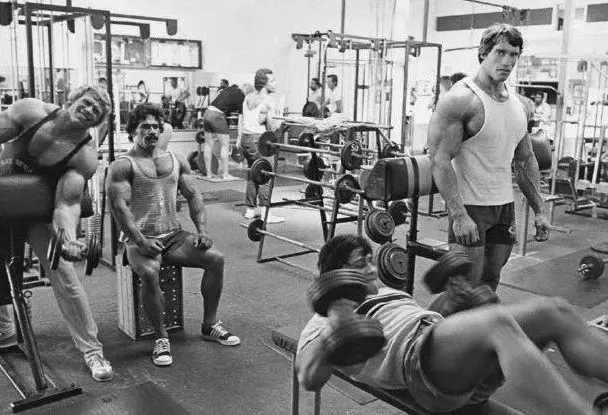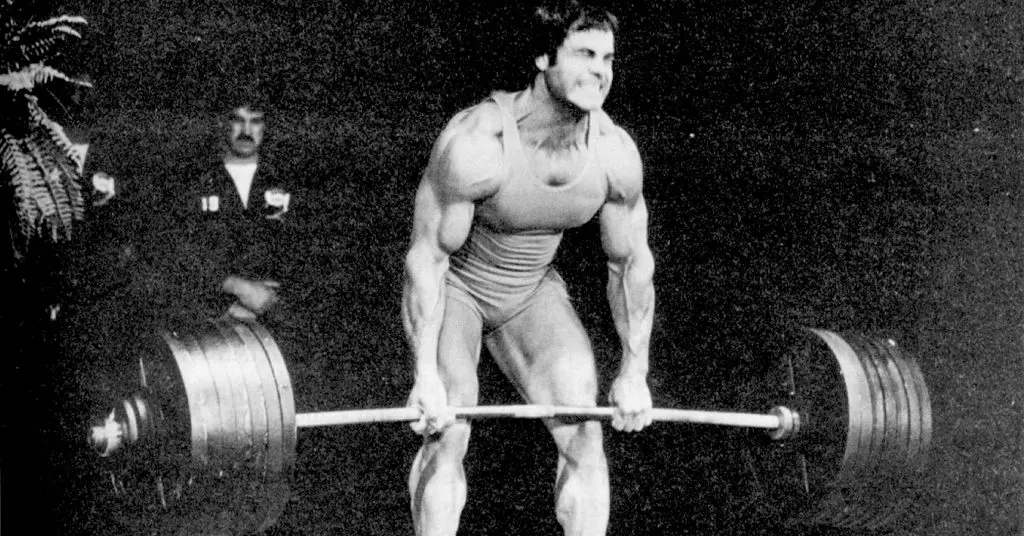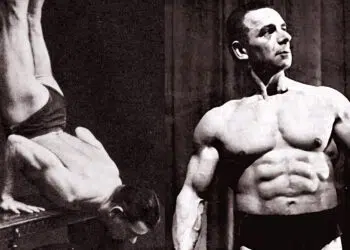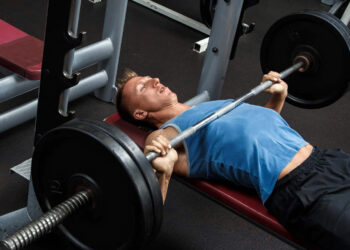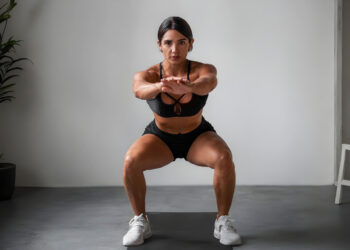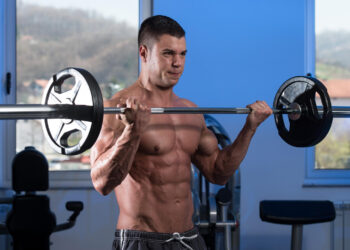In strength training, there are lots of different ways to arrange your workouts, and almost everyone who lifts weights is either on the look-out for the perfect workout split or believes they have found it.
But the reality is, there is no “one size fits all” magic routine that will work for everyone. We’re all individuals with different wants and needs, and that means what works for one person may not work for someone else.
There are a lot of factors that will determine if a workout split is right for you, including:
- The amount of time you have available to train
- Your experience
- How well you recover between workouts
- Your goals
- Your weaknesses
Here are 12 tried and tested workout splits for you to try. Consider the pros and cons of each one and then slot your preferred exercises into the one you choose. The exercises are listed for example only – adapt your chosen split so that it’s right for you.
Sets, Reps, and Rest Periods
For your workout to be effective, you need to choose the set and rep range than best matches your training goal. That doesn’t mean you can’t work outside these ranges, and occasionally doing higher or lower reps can be beneficial for keeping your workouts fresh and interesting.
But, for best results, the majority of your training should reflect your current fitness goal.
Level Up Your Fitness: Join our 💪 strong community in Fitness Volt Newsletter. Get daily inspiration, expert-backed workouts, nutrition tips, the latest in strength sports, and the support you need to reach your goals. Subscribe for free!
The accepted rep ranges and recovery periods are:
- Muscular endurance: 13-20 reps, 30-60 seconds rest between sets
- Hypertrophy (muscle growth): 6-12 reps, 60-90 seconds rest between sets
- Strength: 1-5 reps, 3-5 minutes rest between sets
- Power: 1-5 reps, 3-5 minutes rest between sets
Regarding weight, you should choose a weight that forces you to reach muscular failure somewhere within your selected rep range. For example, for hypertrophy, if you can do 15 reps, the weight is too light, but if you only manage four reps, it’s too heavy. Adjust your weights to ensure you stay within or very close to the appropriate rep range.
1. The full-body split
Some bodybuilders think that full-body splits are only suitable for beginners, but that’s not necessarily the case. In fact, up until the 1940s and 1950s, almost all bodybuilders did full-body workouts.
Full-body workouts are ideal for exercisers who can’t train more than a couple of times a week. But, on the downside, you won’t be able to train each muscle group with a ton of volume. For older lifters and those who struggle to recover between workouts, less training volume may not be a bad thing.
| Workout 1 | Workout 2 | Workout 3 | |
| 1 | Squats | Leg press | Lunges |
| 2 | Bench press | Chest press | Push-ups |
| 3 | Seated rows | Bent over rows | Single-arm rows |
| 4 | Dumbbell shoulder press | Barbell shoulder press | Shoulder press machine |
| 5 | Lat pulldown – wide grip | Pull-ups | Lat pulldown – narrow grip |
| 6 | Leg extensions | Leg curls | Calf raises |
| 7 | Barbell curls | Dumbbell curls | Cable curls |
| 8 | Parallel bar dips | Triceps pushdowns | Skull crushers |
| 9 | Planks | Cable crunches | Hanging knee raises |
| 10 | 45-degree back extensions | Side bends | Cable woodchop |
2. The upper body/lower body split
Upper body/lower body splits are ideal for exercises who, until now, were following a full-body workout plan. This training split allows for increased volume but also provides plenty of recovery between workouts. To avoid boredom, each upper body and lower body workout should be slightly different.
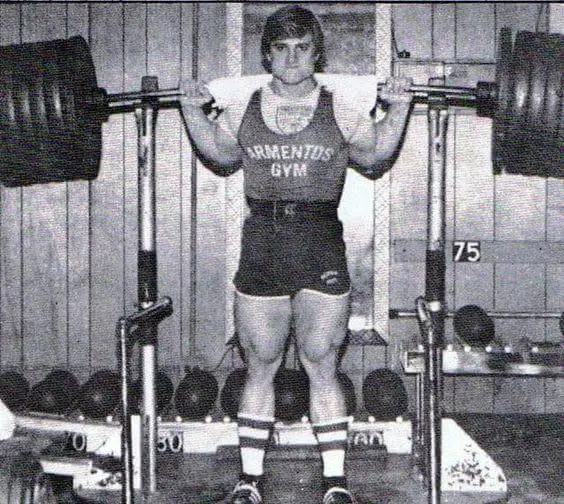
On the downside, unless you are prepared to do very long upper body workouts, your upper body won’t receive as much training volume as your legs.
| Upper body | Lower body | Upper body | Lower body | |
| 1 | Bench press | Squats | Inc. DB bench press | Deadlifts |
| 2 | Pull-ups | Split squats | Pulldowns | Leg press |
| 3 | Shoulder press | Romanian deadlifts | Lateral raises | Nordic curls |
| 4 | Bent over rows | Leg curls | Chest supported rows | Leg extensions |
| 5 | Barbell curls | Seated calf raises | Dumbbell curls | Standing calf raises |
| 6 | Triceps pushdowns | Ab rollouts | Close grip bench press | Weighted crunches |
3. The push-pull-legs split
The push-pull-legs training split is arguably one of the most popular ways to organize your workouts. It’s been used by thousands of successful bodybuilders including the Austrian Oak Arnold Schwarzenegger.
With this split, you can train each muscle group once per week, or ramp things up and train everything twice. Because the latter option involves six workouts per week, it is probably best left to advanced lifters with excellent recovery abilities.
4. The agonist and same synergist split
In strength training anatomy, the agonist is the main muscle involved in an exercise, and the synergist is a smaller, assistance muscle. For this workout, that means training chest and triceps together, or back and biceps.
The advantage of this method is that the synergist should be well and truly warmed up by the time you get around to training it. But, on the downside, it may also be quite fatigued so you won’t be able to train it as hard as you might otherwise like.
| Chest and triceps | Back and biceps | Legs and shoulders | |
| 1 | Bench press | Pull-ups | Squats |
| 2 | Decline bench press | Seated rows | Hack squat |
| 3 | Incline flyes | Lat pulldowns | Leg curls |
| 4 | Cable skull crushers | Single-arm rows | Romanian deadlifts |
| 5 | Triceps pushdowns | Concentration curls | Shoulder press |
| 6 | Close-grip push-ups | EZ bar curls | Upright rows |
| 7 | Lateral raises |
5. The agonist and opposing synergist split
For this workout, after you have trained your chosen agonist muscles, you then work the opposing synergist – for example, chest and biceps, and back and triceps. The opposing synergist should be fresh and strong, so you can hammer it with plenty of volume.
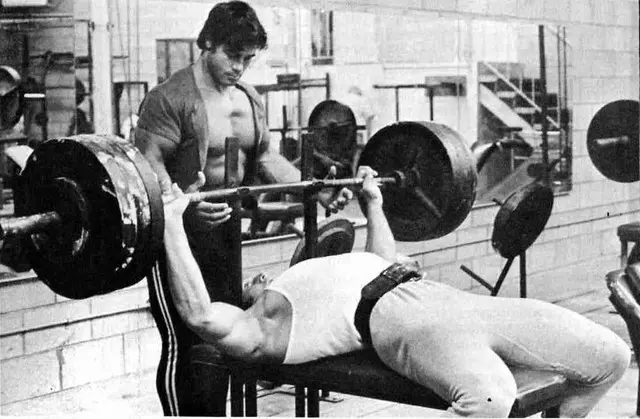
However, it also means that you’ll end up training your synergists twice a week, once directly and once indirectly. This could lead to over-development and even overuse injuries.
| Chest and biceps | Back and triceps | Legs and shoulders | |
| 1 | Bench press | Pull-ups | Squats |
| 2 | Decline bench press | Seated rows | Hack squat |
| 3 | Incline flyes | Lat pulldowns | Leg curls |
| 4 | Cable skull crushers | Single-arm rows | Reverse hypers |
| 5 | Concentration curls | Triceps pushdowns | Shoulder press |
| 6 | EZ bar curls | Close-grip push-ups | Upright rows |
| 7 | Lateral raises |
6. The anatomical split
This split is a favorite of Australian strength coach Ian King. Instead of thinking in terms of muscle groups, exercises are arranged according to their main joint action and plane of movement.
This split is great for exercisers that want to achieve a balance between muscle groups. As an added benefit, it includes two leg workouts, and that’s something most bodybuilders can really benefit from.
| Vertical push & pull | Legs – quads dominant | Horizontal push & pull | Legs – hips dominant | |
| 1 | Barbell push-press | Front squats | Chest supported rows | Deadlifts |
| 2 | Chin-ups | Bulgarian split squats | Barbell bench press | Good mornings |
| 3 | Dumbbell shoulder press | Leg extensions | Bent over rows | Leg curls |
| 4 | Lat pulldowns | Box jumps | Inc. DB bench press | Nordic curls |
| 5 | Triceps pushdown | Standing calf raises | Dumbbell curls | Seated calf raises |
| 6 | Barbell reverse curls | Concentration curls |
7. The body part split
The body part split involves training just one muscle group per day. If you choose this split, you should find you have plenty of energy and time to really hammer each muscle group into submission.
Level Up Your Fitness: Join our 💪 strong community in Fitness Volt Newsletter. Get daily inspiration, expert-backed workouts, nutrition tips, the latest in strength sports, and the support you need to reach your goals. Subscribe for free!

But, if you miss a workout, you will have to wait a week before you can train it again, and that could lead to lost muscle size.
Also, for this plan to work, you need to train as many as six times per week. This is a big-time commitment. If you have a habit of missing workouts, this may not be the plan for you. But, if you are happy to go to the gym every day, this split could be just what you want.
| Chest | Back | Shoulders | Legs | Arms | |
| 1 | Inc. DB bench press | Pull-ups | Seated DB press | Squats | Barbell curls |
| 2 | Barbell bench press | Lat pulldowns | Shoulder press machine | Hack squat | EZ bar skull crushers |
| 3 | Decline bench press | T-bar rows | Lateral raises | Good mornings | Dumbbell curls |
| 4 | Chest press machine | Single-arm rows | Front raises | Leg curls | Triceps pushdowns |
| 5 | Cable flyes | Pullover machine | Face pulls | Hip thrust | Concentration curls |
| 6 | Seated calf raises | Triceps kickbacks | |||
| 7 | Standing calf raises |
8. The power building split
Power building is a combination of powerlifting and bodybuilding and is designed to increase strength and muscle size in equal measure. Each workout is built around one of the three lifts contested in powerlifting – the squat, bench press, and deadlift.
With just three sessions per week, this is a great split for busy exercisers who can’t commit to more frequent workouts. But, by focusing on the big three, it’s also a somewhat unbalanced split, as some muscle groups may end up being neglected. This can be avoided by adding a fourth workout that coverers any body parts that are not part of the main three sessions.
| Squat day | Bench press day | Deadlift day | Assistance day* | |
| 1 | Squats | Bench press | Deficit deadlifts | Shoulder press |
| 2 | Leg press | Close grip bench press | Back extensions | Face pulls |
| 3 | Romanian deadlifts | Dumbbell flyes | Nordic leg curls | Barbell curls |
| 4 | Leg curls | Skull crushers | Kroc rows | Weighted crunches |
| 5 | Standing calf raises | Lat pulldowns |
*Optional
9. The AM/PM split
This split involves training twice a day. You train a large muscle group in the morning and a smaller muscle group in the evening. This makes good use of your energy and also saves you from having to spend hours in the gym at a time. You’ll also have two post-training meals, which may help kick muscle anabolism up a gear. It’s an excellent option for anyone who drives past their gym on the way to and then from work.
However, working out twice a day means you’ll need to commit a lot of time to training, and you’ll also need to focus on rest and recovery to avoid overtraining.
|
AM |
|||||
| Chest and triceps | Back and biceps | Legs | Shoulders and arms | ||
| 1 | Bench press | Pull-ups | Squats | Push-press | |
| 2 | Inc. DB press | Lat pulldowns | Romanian deadlift | Seated DB press | |
| 3 | Cable crossover | Chest supported row | Leg press | Lateral raises | |
| 4 | Push-ups | Single-arm rows | Leg curls | Front raises | |
|
PM |
|||||
| 1 | Dips | Barbell curls | Seated calf raises | EZ preacher curls | |
| 2 | DB overhead extensions | Zottman curls | Standing calf raises | Seated dumbbell curls | |
| 3 | Cable kickbacks | Concentration curls | Donkey calf raises | Skull crushers | |
| 4 | Triceps pushdowns | ||||
10. The strength sport split
This plan involves aspects of weightlifting, powerlifting, bodybuilding, and strongman, all wrapped into one four-way split workout. If you have no specific training goals or want to develop a decent level of all-round strength, muscle size, and power at the same time, this could be the workout for you.
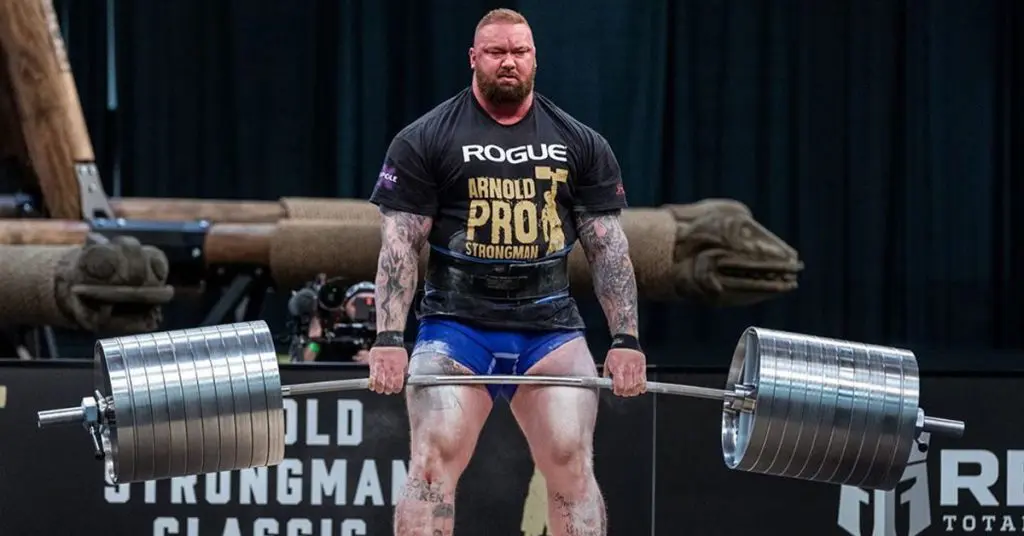
But, on the downside, doing a little of everything means you’ll never progress as fast as someone who specializes in just one type of training. However, it’s unlikely that your workouts will ever be boring!
| Weightlifting | Powerlifting | Bodybuilding | Strongman | |
| 1 | Power cleans | Squats | DB bench press | Overhand deadlift |
| 2 | Push-press | Bench press | Lat pulldowns | Single-arm clean and press |
| 3 | Power snatches | Deadlift | Leg press | Zercher squat |
| 4 | Overhead squats | Strict curls | Leg extensions | Farmers walk |
| 5 | Box jumps | DB shoulder press | Sled push | |
| 6 | DB curls | |||
| 7 | Triceps pushdowns |
11. The one lift a day split
This split is as simple as it sounds; choose one compound exercise and train it hard. The next day, do the same using a different exercise. Train 5-6 days a week, covering your whole body during that time.
With just one exercise per training day to think about, you can give each workout maximum effort. And even with your warm-up and cool-down, you should be in and out of the gym in 40 minutes or less.
This is not the most balanced training approach, and it’s definitely better for strength than size, but if you are short on time, it’s an excellent option.
| Monday | Tuesday | Wednesday | Thursday | Friday | Saturday | Sunday |
| Deadlift | Bench press | Pull-ups | Deadlift | Overhead press | Power clean | Rest |
12. The upper/lower/full-body split
Do you want to work your entire body twice per week, but only have time to train three times? This workout is the solution. Do a standard upper and lower split and then round out your week with a short full-body program that utilizes different exercises. You can even use different set and rep schemes to add more variety to your training week.
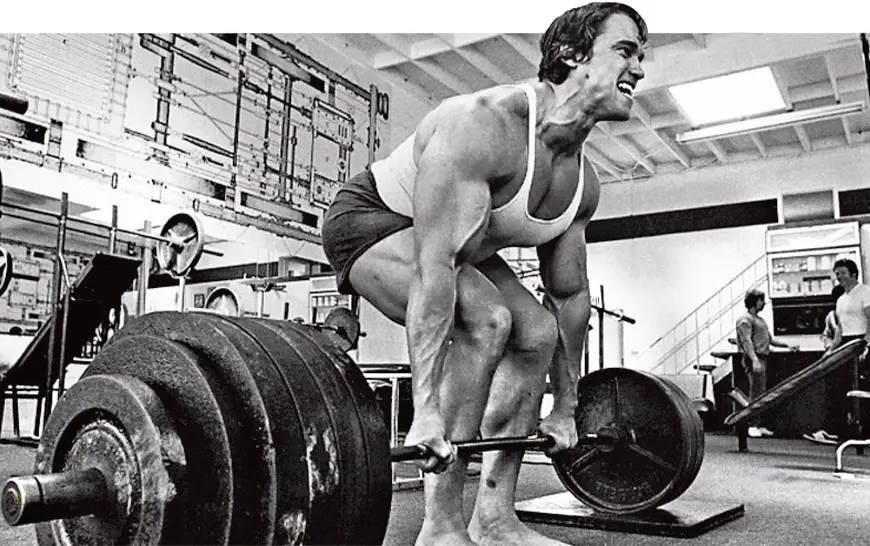
On the downside, the full-body workout can be pretty grueling but, if you do it on Friday night or Saturday morning, you’ve got the whole weekend to recover before you need to train again.
| Upper body | Lower body | Full body | |
| 1 | Pull-up | Squats | Dumbbell bench press |
| 2 | Shoulder press | Leg extensions | Leg press |
| 3 | Bench press | Deadlifts | Seated rows |
| 4 | Bent-over row | Leg curls | Romanian deadlift |
| 5 | Lateral raises | Lunges | Handstand push-ups |
| 6 | Barbell curls | Seated calf raises | Pull-ups |
| 7 | Dips |
Wrapping up
With a whopping 12 different workout splits to choose from, it’s clear that there really can’t be one program to rule them all. Each one has advantages and disadvantages, and the trick is to choose the one that is best for you!
And even if you discover the ideal split for your abilities and circumstances, it won’t stay the best one forever. You may outgrow it and need something that provides more training volume or frequency. Or your circumstances may change so that you cannot train as often as you’d like. Your training goals could change too, maybe away from bodybuilding and more toward powerlifting.
So, by all means fall in love with your split routine, but there is no need to marry it!
Remember too that, for any split to work, you need to stick with it for at least four to six weeks. That’s long enough to assess its worth. If, at the end of that time, you haven’t “clicked” with your new training split, move on and try another.
Finally, the splits and exercises outlined above are only recommendations. You can (and should) experiment and modify them to find the right one for you.

